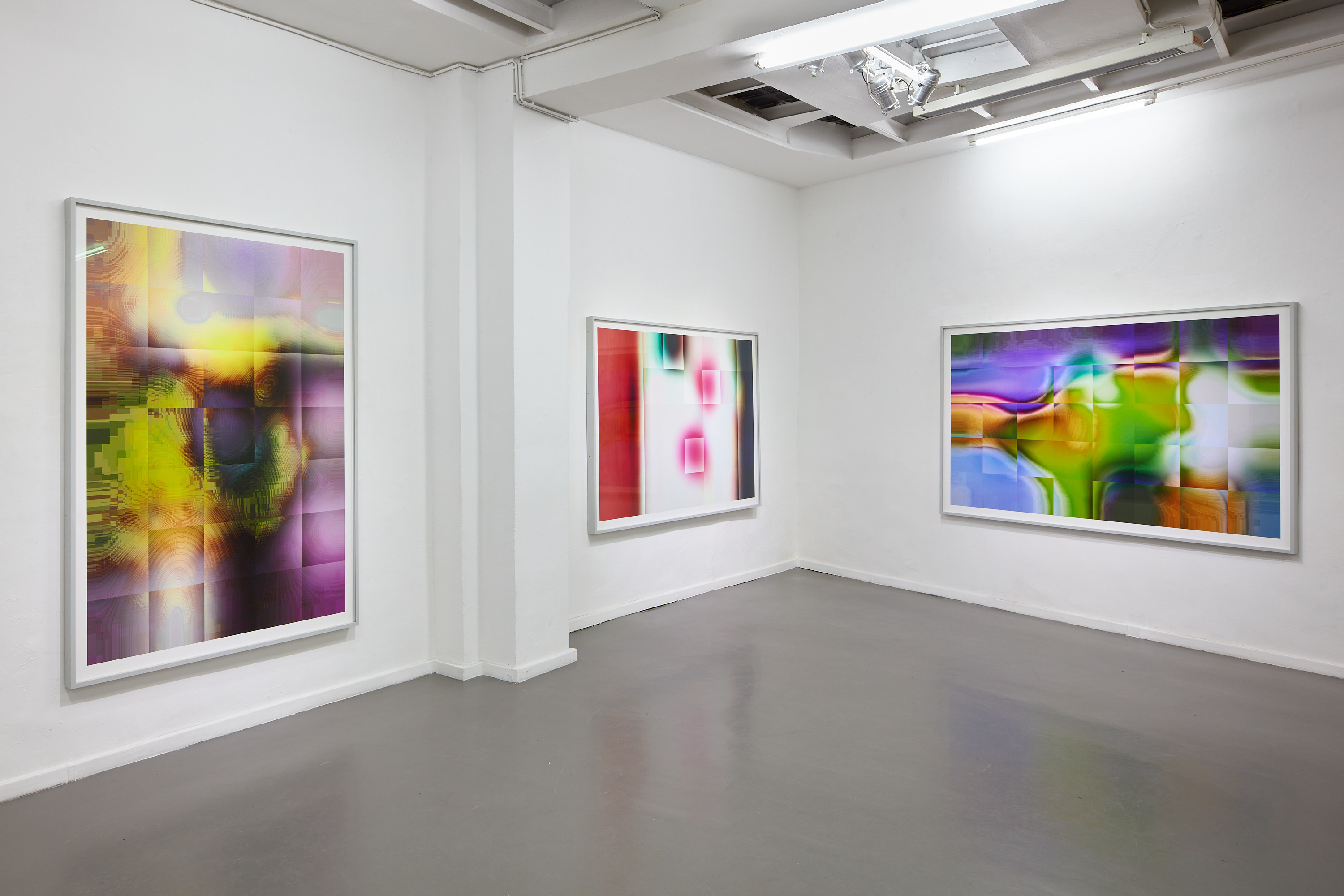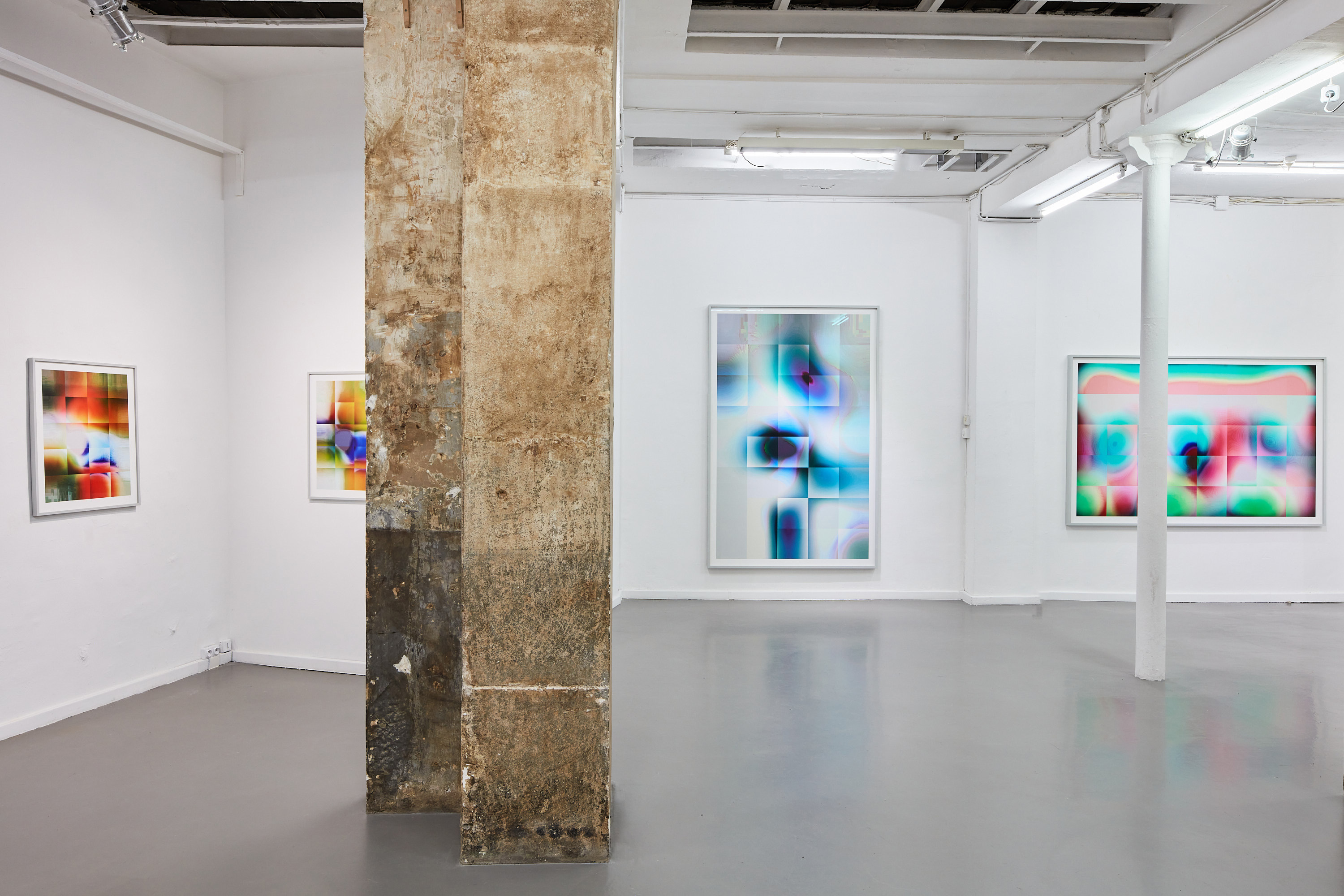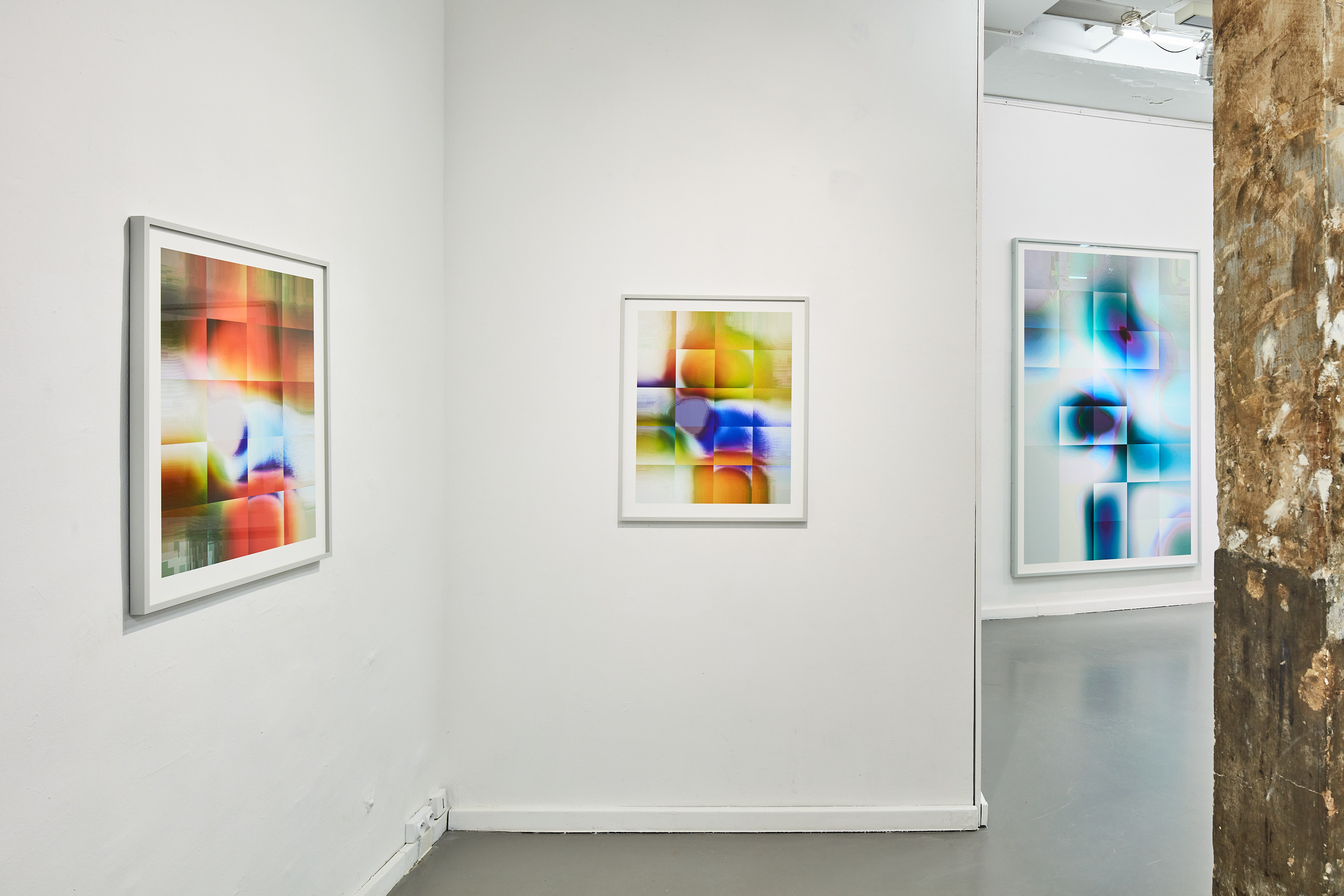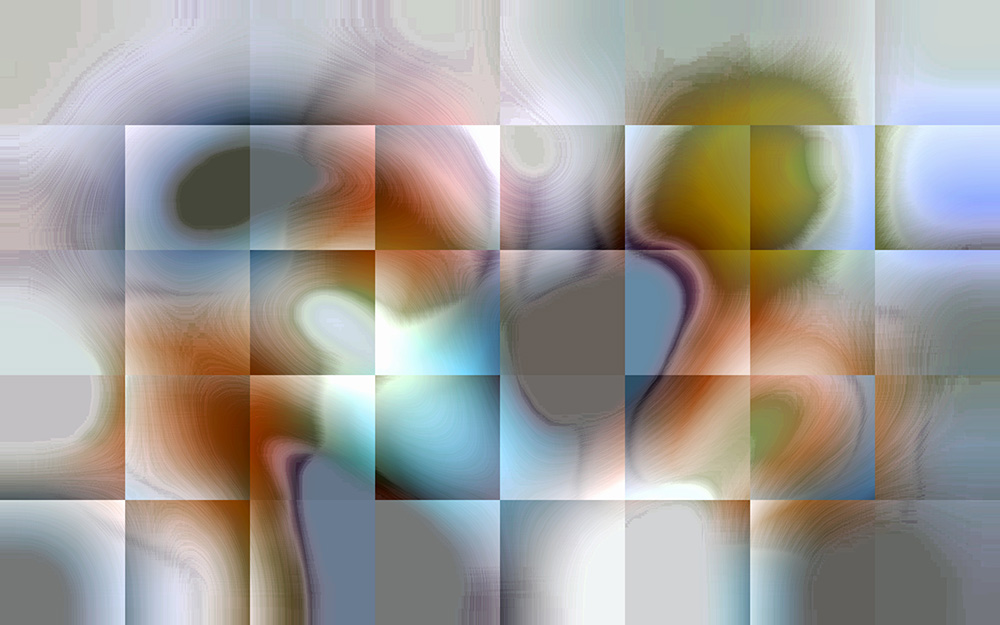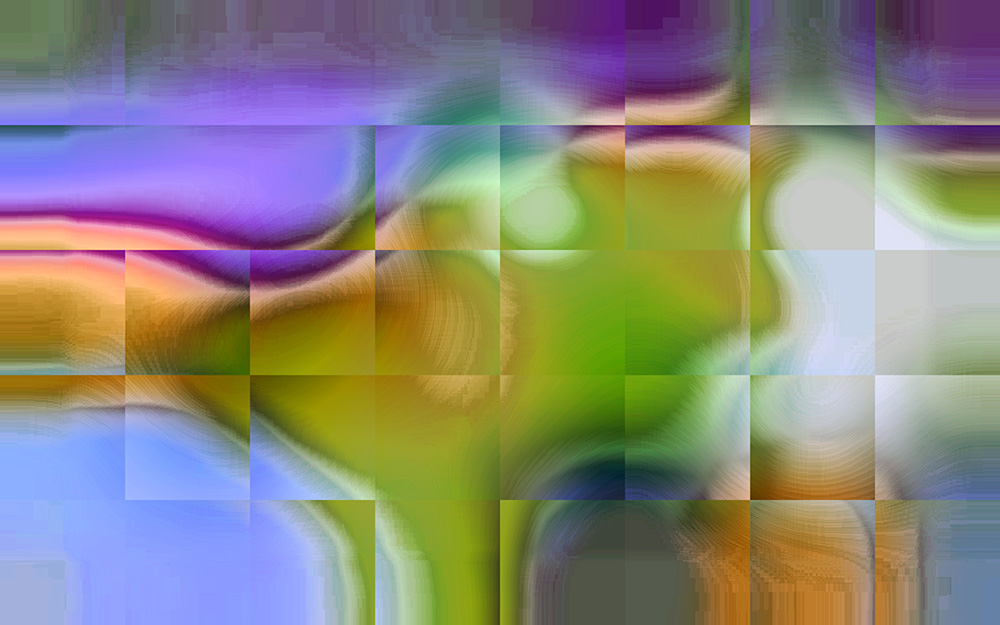

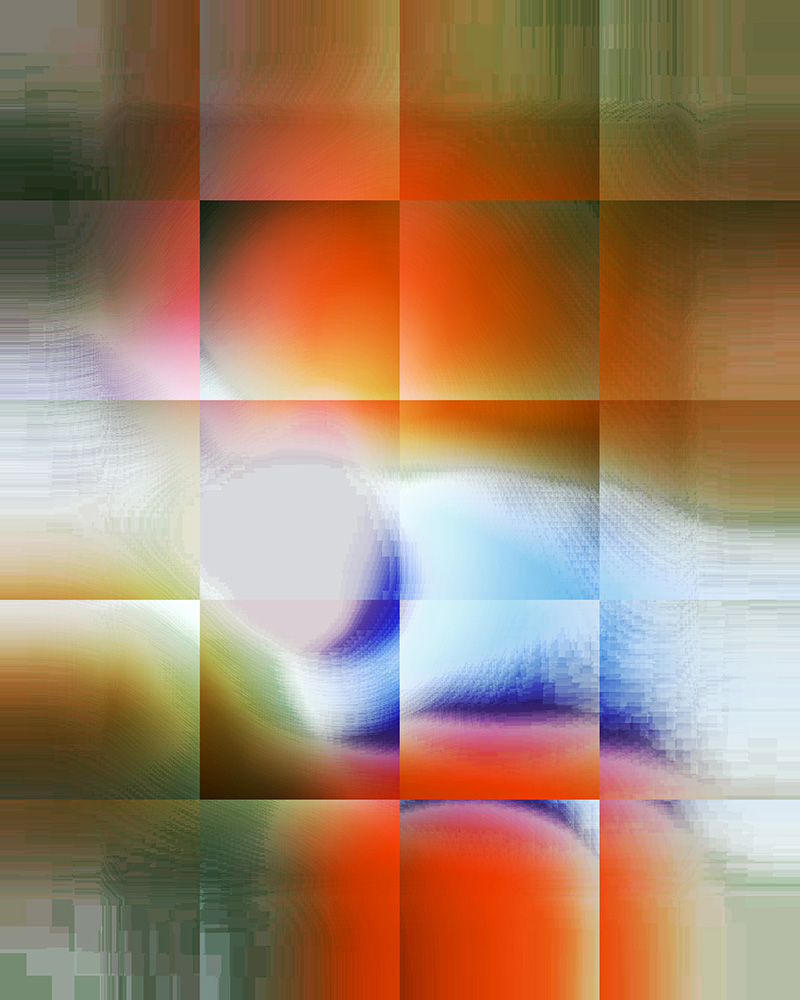

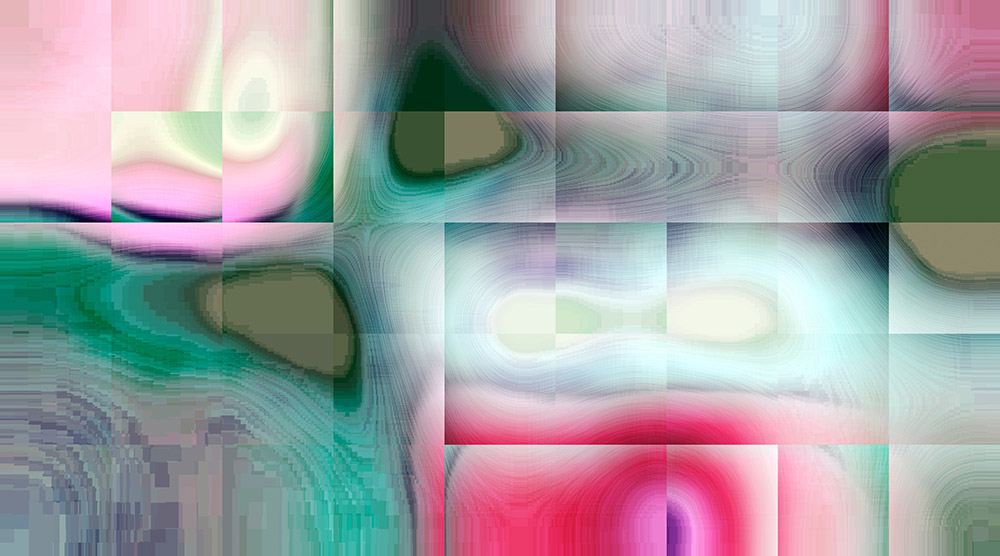
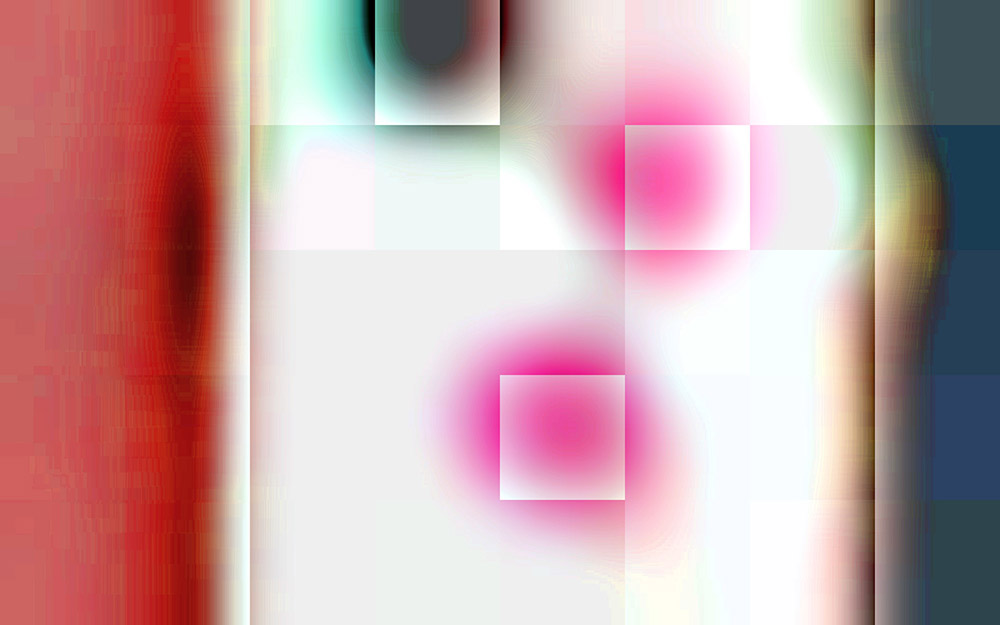

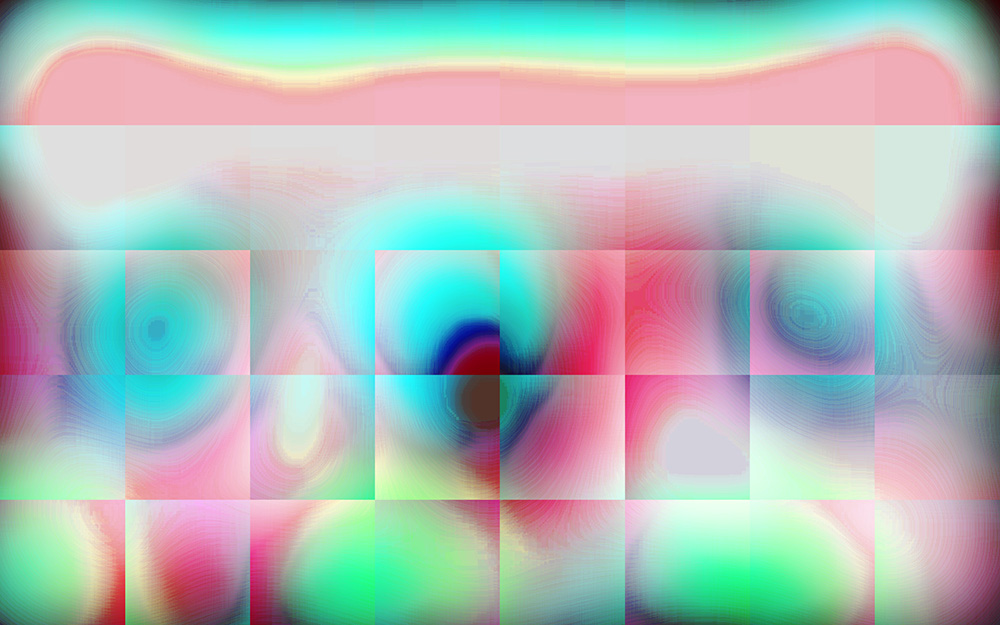
Press release
In this new series titled "Screen", Sebastian Riemer by repurposing stock images, creates a thoughtful and moving commentary on AI, without using AI. By working with rudimentary algorithms, he transforms initially narrative images into purely aesthetic compositions, disrupting the usual visual continuity. His works highlight the breaks in visual transmission, exposing the internal workings of image technologies. Riemer thus questions the boundary between machine and artist, and the very notion of authorship in the context of AI. He uses simple computer tools, repurposed from their intended use, to interrogate current technologies without resorting to AI itself.
Read the article by Clementine Mercier: "Kosmos 1-0": maître carré, published in the newspaper Libération dated 19-20.10.2024
Exploring the genesis of images created by artificial intelligence, German artist Sebastian Riemer develops here a new series of photographs with an abstract appearance, born from stock images that reveal the algorithms of their creation. He thus highlights a true revolution in our understanding of the world through this radical change in the very constitution of the images that are surrounding us and invfluencing our daily life. A fundamental difference arises between images derived from visible reality, where the fluid continuity of visual elements prevails, particularly in photography, and those generated by diffusion models trained on large image banks.
Drawing from stock images, Riemer first completely erased the visual content by reducing their millions of pixels to just a handful of pixels. Starting from these nearly non-existent visual data, he worked with very rudimentary algorithms to create new images. These images, which initially had mainly a communicative narrative value, were «reconverted» into images that are almost entirely aesthetic, thereby completely escaping the logic of valorization.
An essential characteristic of photographic images is the fluid continuity of visual elements, which contributes to the illusion of our visual environment. When these continuities are disrupted by technical transmission errors, we refer to them as artifacts, which disturb the illusory flow of images from our devices to our brains. Here, visual continuity is broken. What we see now are images that show how visual information is calculated from almost nothing, how color gradients suddenly appear and disappear without an obvious explanation. But still in a way pleasant to our eyes thus revealing the nature of the algorithmic goal to please and to deceive by turning calculated formula into visual appearance.
Riemer?s images consist solely of these disruptions, with a focus on a photographic appearance that is usually avoided. This is made possible by making very simple algorithms work against each other in ways not intended by the programmers, thereby revealing the inner workings of technical image processing. The artist thus enjoys analyzing current technology using «primitive» computer tools, as these images could technically have been created over twenty years ago. Working on AI without using AI.
It is almost impossible to discern to what extent Riemer?s intervention, orchestrating this algorithmic ensemble, influenced the final image aesthetics that appear in his photographic prints. The boundary between the machine subject and the artistic subject is completely blurred. Questions about the true authorship of the images arise similarly to those generated by AI, further complicating the notion of authorship.

